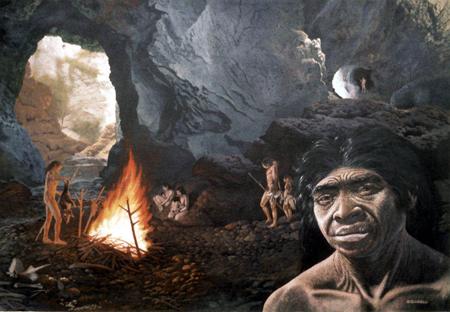(Ecns.cn)--In the history of palaeoanthropology, the discovery of Peking Man – one of the first specimens of Homo erectus – was not the first of its kind, but is one often talked about in the international community today.
Peking Man stands as a monument in the history of paleoanthropological research. The discovery helped paleoanthropologists solve the long-lasting controversy following the discovery of Java Man in Indonesia in the 19th century, proving that Homo erectus evolved from the ape.
In May 2011, paleontologists from the Institute of Vertebrate Paleontology and Paleoanthropology (IVPP), the Chinese Academy of Sciences, along with Swedish colleagues from Uppsala University, found a unique canine tooth among Peking Man site contents that had been untouched since the 1920s.
The discovery once again brought attention to the world heritage site in Zhoukoudian, a small village located about 50 kilometers southwest of Beijing.
World famous discoveries
The discovery of Zhoukoudian was quite unique, especially for its specimens from the Pliocene and Pleistocene, and attracted many geologists to the area. During mining of limestone, local residents also uncovered the so-called Dragon Bones, which scientists found to be fossils.
In February 1918, Swedish geologist and archaeologist Johann Gunnar Andersson came to China to do research on fossils near Zhoukoudian. It was then that he was hired by the Chinese government to serve as an adviser on mineral affairs for the Ministry of Agriculture and Commerce.
Andersson was particularly interested in the rodent fossil that locals had thought were chicken bones, and focused his research in this area, later known as Locality 6 of the Peking Man site.
This discovery of the locality was not significant, but the survey led to a series of investigations in the region.
In 1921, an Austrian palaeontologist named Otto Zdansky also came, and together with Andersson made another survey at Zhoukoudian.
Local people informed them that there were more fossils on Dragon Bone Hill, and after days of searching they found various animal fossils, quartz fragments and two human-like teeth.
One of the two teeth was an upper molar and the other was an unerupted lower premolar.
In 1926, Andersson announced the discovery of two teeth from early man at Zhoukoudian, a discovery which shocked the scientific world, since at that time there had been no discovery of such ancient human fossils in China or the rest of Asia.
Since then, Peking Man and its Zhoukoudian site have become known all over the world. From 1921 to 1979, Chinese experts unearthed many more fossils there, including six nearly complete crania, 19 large skull fragments and 15 incomplete mandibles.


















